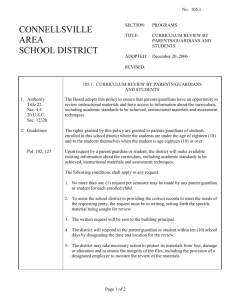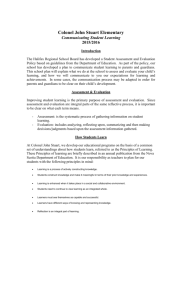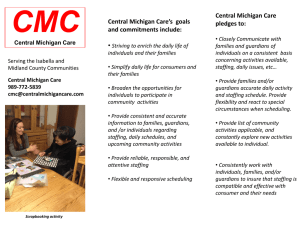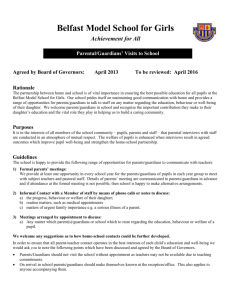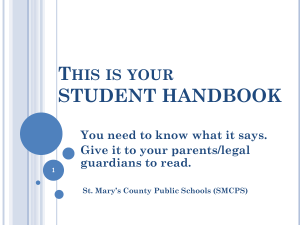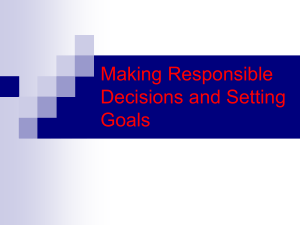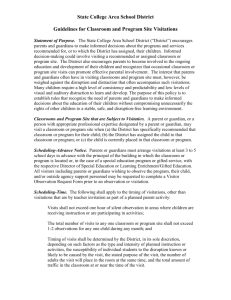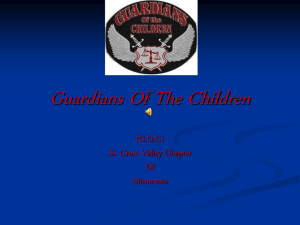Strategies for Engaging Parents that Support Student
advertisement
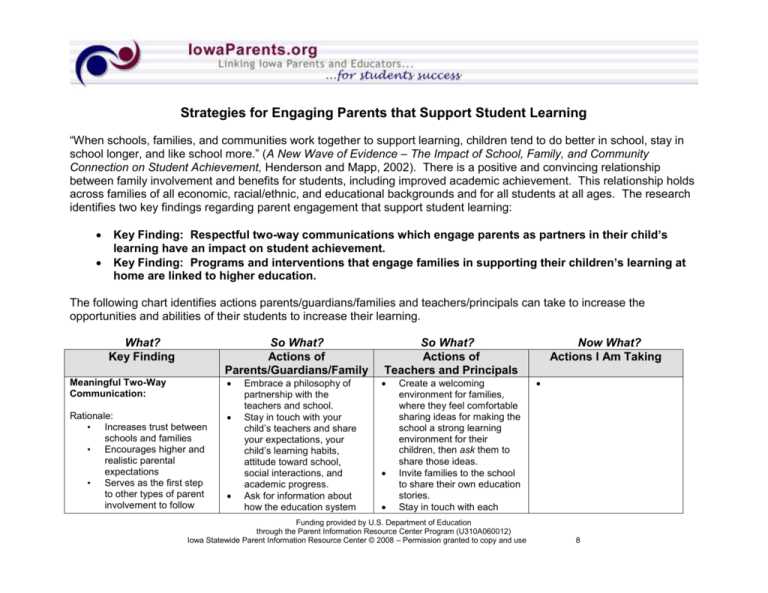
Strategies for Engaging Parents that Support Student Learning “When schools, families, and communities work together to support learning, children tend to do better in school, stay in school longer, and like school more.” (A New Wave of Evidence – The Impact of School, Family, and Community Connection on Student Achievement, Henderson and Mapp, 2002). There is a positive and convincing relationship between family involvement and benefits for students, including improved academic achievement. This relationship holds across families of all economic, racial/ethnic, and educational backgrounds and for all students at all ages. The research identifies two key findings regarding parent engagement that support student learning: Key Finding: Respectful two-way communications which engage parents as partners in their child’s learning have an impact on student achievement. Key Finding: Programs and interventions that engage families in supporting their children’s learning at home are linked to higher education. The following chart identifies actions parents/guardians/families and teachers/principals can take to increase the opportunities and abilities of their students to increase their learning. What? Key Finding So What? Actions of Parents/Guardians/Family So What? Actions of Teachers and Principals Meaningful Two-Way Communication: Rationale: • Increases trust between schools and families • Encourages higher and realistic parental expectations • Serves as the first step to other types of parent involvement to follow Embrace a philosophy of partnership with the teachers and school. Stay in touch with your child’s teachers and share your expectations, your child’s learning habits, attitude toward school, social interactions, and academic progress. Ask for information about how the education system Create a welcoming environment for families, where they feel comfortable sharing ideas for making the school a strong learning environment for their children, then ask them to share those ideas. Invite families to the school to share their own education stories. Stay in touch with each Funding provided by U.S. Department of Education through the Parent Information Resource Center Program (U310A060012) Iowa Statewide Parent Information Resource Center © 2008 – Permission granted to copy and use Now What? Actions I Am Taking 8 Key Finding • • Actions of Parents/Guardians/Family Leads to a higher degree of parents’ commitment to helping their students improve Puts everyone on the “same page” works where your child attends school. Plan your student’s academic program with your student and the guidance counselor as well as with the teachers. Double check to be sure the guidance counselor has your student involved in classes that will help him/her reach your expectations. Share with the principal and teachers the ways you encourage your students at home; share also your cultural traditions and expectations. Ask for an interpreter/translator if English is not your first language. Invite teachers to your home before school starts to build relationships with teachers. Meet regularly with teachers to talk about the progress of your student and to strengthen the partnership to support his/her learning. Ask the teachers about the curriculum, the textbooks, and other learning materials your student is expected to use. Actions of Teachers and Principals Actions I Am Taking student’s parents/guardians and share your expectations and data regarding the student’s learning habits, attitude toward school, social interactions, and academic progress. Ask about families’ expectations for their students’ education. Partner with families to plan the academic program of their students. Prepare parents/guardians for their student’s “next level” or “next steps” through focused conversations with guidance counselors and other building staff. Recognize that families have tools in their toolkits for learning, also. Meet families face to face and telephone routinely. Lead with the positive whenever you contact parents. Use language that promotes cooperation, not confrontation. And end the conversation with a thankyou. Use translators/interpreters who are able to translate between the cultural and ethnic groups and you. Funding provided by U.S. Department of Education through the Parent Information Resource Center Program (U310A060012) Iowa Statewide Parent Information Resource Center © 2008 – Permission granted to copy and use 9 Key Finding Actions of Parents/Guardians/Family Actions of Teachers and Principals Contact your student’s teacher(s) with questions, concerns, or information (e.g., crisis, health issue, attendance, work schedule, bullying, homework) impacting your student’s ability to learn. Ask for information that addresses your needs/concerns (e.g., careers, testing schedules, learning expectations, impact of nutrition, physical activity, and sleep on student success). Tour your student’s school, especially at transition levels (e.g., entering kindergarten, middle school, or high school). Connect with other families in the school community. Learn about their expectations for students. Read the school/class newsletter. Call the principal or teacher(s) for additional information. Share with your student’s teacher(s) and principal what would make school better for you and your student. Get involved in the decisionmaking process of your Actions I Am Taking Give families information about how your class/school works – especially those new to the building. Provide tours of the classrooms and school as well as opportunities to visit with building staff, especially at transition levels. Make home visits to build relationships and help students and their families make positive transitions. Work with families to identify mutually convenient times for class events and/or meetings. Provide a family center in the building, where parents can meet, have discussion groups, and work on school projects. Meet with families and students at feeder schools – explain the transition, the expectations, and the classes. Provide a variety of options for participation of parents and guardians, and let them choose. Connect with families and communicate with them about what they care most – their child’s learning. Funding provided by U.S. Department of Education through the Parent Information Resource Center Program (U310A060012) Iowa Statewide Parent Information Resource Center © 2008 – Permission granted to copy and use 10 Key Finding Actions of Parents/Guardians/Family Learning at Home: Rationale: All families can, and do, have positive effects on their children’s learning. Families of all cultural backgrounds, education, and income levels: • • • • Encourage their children Talk with them about school Help them plan for higher education Keep them focused on learning and homework school. Participate as an active member of the building’s leadership team. Ask any question for which you need an answer or have a concern; after all, it is your student’s success with learning that is most important, and you are the most influential advocate. Provide a study area equipped with appropriate lighting, quiet atmosphere, writing materials and utensils, and support materials (e.g., dictionary, thesaurus). Talk with your student about school activities and classes in which they are involved. Make sure your student reads and does his/her homework. Talk about career and education options; provide experiences for students to learn about both. Monitor your student’s outof-school activities, and encourage those that are “learning related.” Get involved in interactive homework – homework that involves you in your student’s learning. Actions of Teachers and Principals Ask parents what they need to help their children learn at home. Provide opportunities in a variety of formats (e.g., face to face, online, through community partners) to meet those needs. Offer workshops based on parents’ needs (ASK! Listen! Provide!). For example, Development of positive discipline strategies, Supporting students through crisis, Contributing to children’s positive attitudes about school and developing high expectations, Tips on curtailing TV viewing, Reading to your child, Math in the kitchen, Surviving early adolescence, Funding provided by U.S. Department of Education through the Parent Information Resource Center Program (U310A060012) Iowa Statewide Parent Information Resource Center © 2008 – Permission granted to copy and use Actions I Am Taking 11 Key Finding Actions of Parents/Guardians/Family Encourage others and get involved in programs at school or in your community that support families in guiding students’ learning. Participate in workshops on topics important to you and your student’s success (e.g., best practices in reading to your child, building students’ vocabulary, development of positive discipline strategies, supporting students through crisis). Participate in training provided on how to use learning packets and/or parent handbooks related to standards and benchmarks. Volunteer in school to make connections at home with the learning observed at school. And at the middle school level, it is especially important to . . . Discuss school activities. Monitor out-of-school activities Contact school staff regarding strengths, challenges, or concerns about your child. Volunteer and attend parent- Actions of Teachers and Principals Actions I Am Taking Setting up expectations for homework. Develop and share a tool box for helping kids at home. Share “homework” expectations with students and families, and provide parents/ guardians with guidelines that will help them monitor and supervise their children’s homework. Share effective practices with parents about their involvement (e.g., interactive homework, building vocabulary). Make “homework” interactive, but not to the point that the parent has to be the teacher of the learning. Develop “A Minute for Learning” for the local television/radio station; have students and/or parents share the information that identifies opportunities/connections for learning at home. Develop partnerships with other community agencies who have a stake in quality education in the community to provide easily accessible opportunities for parents/ Funding provided by U.S. Department of Education through the Parent Information Resource Center Program (U310A060012) Iowa Statewide Parent Information Resource Center © 2008 – Permission granted to copy and use 12 Key Finding Actions of Parents/Guardians/Family Actions of Teachers and Principals teacher conferences and other school events. Also remember to talk about career and education options; provide experiences for student to learn about both. Actions I Am Taking guardians to network with other families to learn strategies for helping their children at home as learners. And at the high school level, it is just as important to . . . Guide your students toward postsecondary opportunities. Make sure they read and do their homework. Stress the value of education. Also remember to talk about career and education options; provide experiences for student to learn about both. Students with involved parents are more likely to . . . • Earn higher grades and test scores. • Be promoted, pass their courses, and earn credits. • Attend school regularly. • Have better social skills and improved behavior. • Graduate and go on to postsecondary education. Funding provided by U.S. Department of Education through the Parent Information Resource Center Program (U310A060012) Iowa Statewide Parent Information Resource Center © 2008 – Permission granted to copy and use 13
